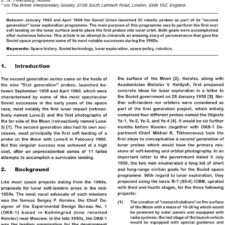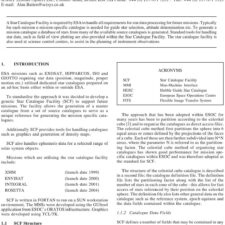Project Icarus: Exploring Alpha Centauri: Trajectories and Strategies for Subprobe Deployment
£5.00
S. Baxter (2016), JBIS, 69, pp.11-19
Refcode: 2016.69.11
Keywords: Project Icarus, Project Daedalus, Alpha Centauri, Proxima Centauri, Centauri Bb, Interstellar exploration, Fusion propulsion, Insertion orbits
Abstract:
This paper describes a preliminary study of a long-stay mission to explore the Alpha Centauri system with a fast unmanned probe: that is, an interstellar probe designed to meet the Project Icarus Terms of Reference [1]. Alpha Centauri is a complex triple-star system; to explore such a system effectively within a finite mass and energy budget will require trade-offs concerning probe trajectories and subprobe deployment. In addition the complexities of this end phase of the interstellar mission will have implications for the design of the rest of the mission profile. The paper’s essential purpose is to synthesise relevant data on the Alpha Centauri system to support specific mission studies to that system. The model strategy presented here uses Hohmannellipse minimum-energy trajectories for the exploration of (hypothetical) close-in Centauri A-B systems, while a flyby subprobe released early in the interstellar cruise is used to explore the Proxima system. This work is intended as a proof of concept of one low-energy strategy; more refined designs could be based on finalised propulsion vehicle designs, more realistic planetary system modelling, and optimised trajectory analyses. This paper is a submission of the Project Icarus Study Group.





